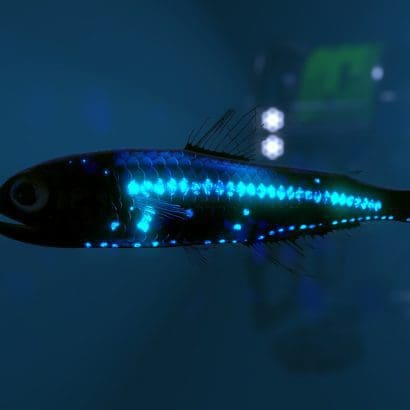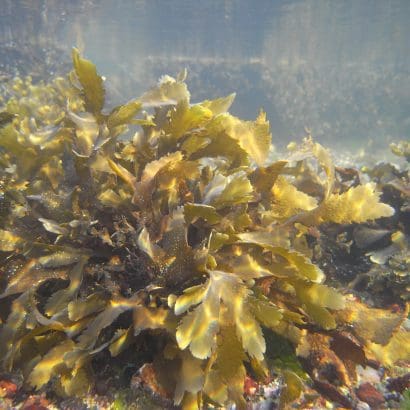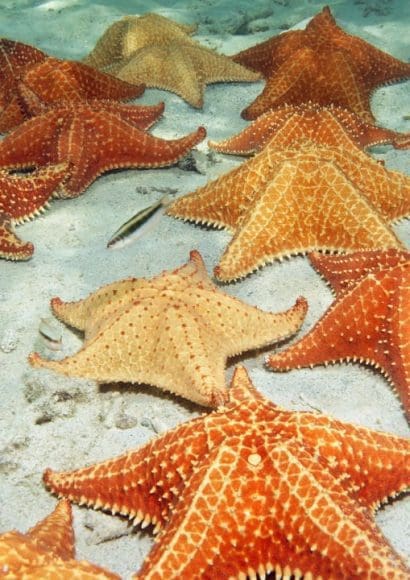
Starfish, also known as sea stars, have captivated scientists and nature enthusiasts alike with their remarkable regenerative ability. These fascinating creatures possess an astonishing capacity to regrow lost body parts, making them a subject of great interest in the field of regenerative medicine. The ability of starfish to regenerate their arms, and even their entire bodies, has sparked numerous studies and investigations into the underlying mechanisms behind this extraordinary phenomenon.
In this article, we will delve into the incredible regenerative capabilities of starfish, exploring the intricacies of their regrowth process and the potential implications for human health and scientific research. Prepare to be amazed by the extraordinary world of starfish regeneration.
Contents
Anatomy and Function of Starfish.🐟
Starfish, also known as sea stars, possess a unique and fascinating anatomy that sets them apart from other marine creatures. These remarkable organisms exhibit a radial symmetry, characterized by their typically five arms that radiate from a central disk. However, some species of starfish can have more arms, ranging from three to over twenty.
The body structure of a starfish consists of several distinct parts. The central disk, often referred to as the central disc, serves as the hub from which the arms extend. It houses vital organs such as the stomach, reproductive organs, and a water vascular system. The water vascular system is a network of canals filled with seawater that aids in locomotion, respiration, and prey capture.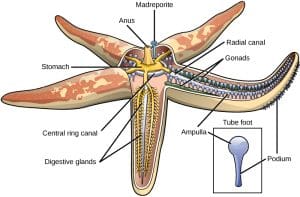
The upper surface of a starfish’s body is covered in a protective layer of plates, known as ossicles. These calcified plates provide support and structure to the starfish’s body while also acting as a defense against predators. The ossicles can vary in shape and size between different species, contributing to the unique appearance of each starfish.
The Regeneration Process🐟.
The regenerative abilities of starfish have captivated scientists and sparked numerous studies aimed at unraveling the intricacies of their remarkable regrowth process. When a starfish loses a body part, such as an arm, it has the incredible ability to regenerate and replace the missing appendage.
The regeneration process in starfish involves a series of complex biological mechanisms. At the center of this process are specialized cells known as stem cells or progenitor cells. These cells have the remarkable capability to differentiate into different types of cells and tissues, enabling the growth and development of new body parts.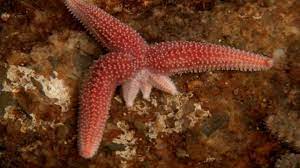
When a starfish loses an arm, the regeneration process begins by forming a specialized structure called the blastema at the site of the injury. The blastema consists of a cluster of undifferentiated cells that will give rise to the new arm. These cells undergo a process called dedifferentiation, where they revert to a less specialized state, allowing them to proliferate and differentiate into the specific cell types needed for arm regeneration.
Factors Influencing Regeneration Capacity.🐟
The remarkable regenerative abilities of starfish are influenced by various factors that can impact their capacity to regrow lost body parts. Understanding these factors is crucial for comprehending the intricacies of the regeneration process and its potential applications in scientific research and medical fields. Here are some key factors that influence the regeneration capacity of starfish:
Species Variability:
Different species of starfish exhibit varying degrees of regenerative capacity. Some species have a higher ability to regenerate compared to others. For example, the common seastar (Asterias rubens) has a remarkable ability to regenerate complete bodies from a single arm, while other species may have limitations in their regenerative abilities.
Age:
Age can play a significant role in the regenerative capacity of starfish. Generally, younger starfish have a greater ability to regenerate compared to older individuals. As starfish age, their regenerative capabilities may decline, resulting in slower or less effective regeneration.
Health and Nutrition:
The overall health and nutritional status of a starfish can influence its regenerative capacity. Starfish that are well-nourished and in good health tend to have a higher ability to regenerate compared to those that are malnourished or compromised in health.
Environmental Conditions:
The surrounding environment can impact the regenerative capacity of starfish. Factors such as temperature, water quality, and availability of resources can affect the speed and success of regeneration. Optimal environmental conditions provide favorable circumstances for the regenerative processes to occur efficiently.
Extent of Injury:
The extent and severity of the injury can also influence the regenerative capacity. Starfish can regenerate partial or complete body parts, but more extensive injuries may pose challenges and require more time and resources for successful regeneration.
Regeneration History:
The regeneration history of a starfish can affect its future regenerative capacity. Starfish that have previously undergone successful regeneration may have enhanced regenerative capabilities compared to those that have not experienced significant regrowth.
Applications in Medicine and Research.🐟
The regenerative abilities of starfish have captured the attention of scientists and researchers, leading to exciting applications in the fields of medicine and scientific investigation. The unique regenerative properties displayed by starfish offer valuable insights and potential breakthroughs for various areas of study. Here are some general aspects of the applications of starfish regeneration in medicine and research: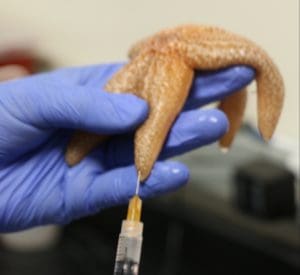
Regenerative Medicine:
The study of starfish regeneration holds great promise for the field of regenerative medicine. By understanding the cellular and molecular mechanisms involved in starfish regrowth, scientists can gain valuable knowledge on how to stimulate and enhance the regeneration of tissues and organs in humans. This research may contribute to the development of innovative therapies for tissue repair, wound healing, and even the regeneration of complex structures, such as limbs or organs.
Tissue Engineering:
The knowledge gained from studying starfish regeneration can be applied to the field of tissue engineering. Tissue engineering aims to create functional human tissues and organs in the laboratory for transplantation. By understanding the processes and signals that promote tissue regeneration in starfish, scientists can design strategies to engineer and grow human tissues in a controlled environment, potentially revolutionizing the field of organ transplantation.
Stem Cell Research:
Stem cells play a crucial role in the regenerative capabilities of starfish. The study of starfish regeneration provides valuable insights into the behavior and potential therapeutic applications of stem cells. Understanding how starfish utilize stem cells for regrowth can guide researchers in harnessing the regenerative potential of stem cells in various medical conditions, such as treating injuries, degenerative diseases, and organ damage.
Biomedical Materials and Implants:
The remarkable regenerative abilities of starfish inspire the development of novel biomedical materials and implants. Researchers aim to create materials that mimic the regenerative processes observed in starfish, promoting tissue regrowth and integration with the human body. These advancements could lead to the development of improved surgical implants, wound dressings, and prosthetic devices that facilitate tissue regeneration and enhance patient outcomes.
Drug Discovery and Screening:
The regenerative capabilities of starfish provide a valuable model for drug discovery and screening. Researchers can use starfish regeneration as a platform to test the efficacy of potential drugs and therapies aimed at promoting tissue regeneration and wound healing. This approach allows for the identification of novel compounds and treatment strategies that may have applications in human medicine.
The Importance of Preserving Starfish.🐟
In conclusion, the preservation of starfish holds great importance for both the marine ecosystem and scientific advancements. These fascinating creatures not only contribute to the biodiversity of our oceans but also serve as valuable subjects for studying regenerative abilities and potential applications in medicine.
By preserving starfish populations, we are ensuring the balance of marine ecosystems. Starfish play a crucial role in controlling the populations of their prey, such as mussels and barnacles, preventing unchecked growth and promoting the health and diversity of marine habitats. Their presence helps maintain the delicate ecological equilibrium that supports numerous other species.
To learn more about the conservation efforts and initiatives dedicated to preserving starfish and other marine species, visit SeafoodPeddler.

